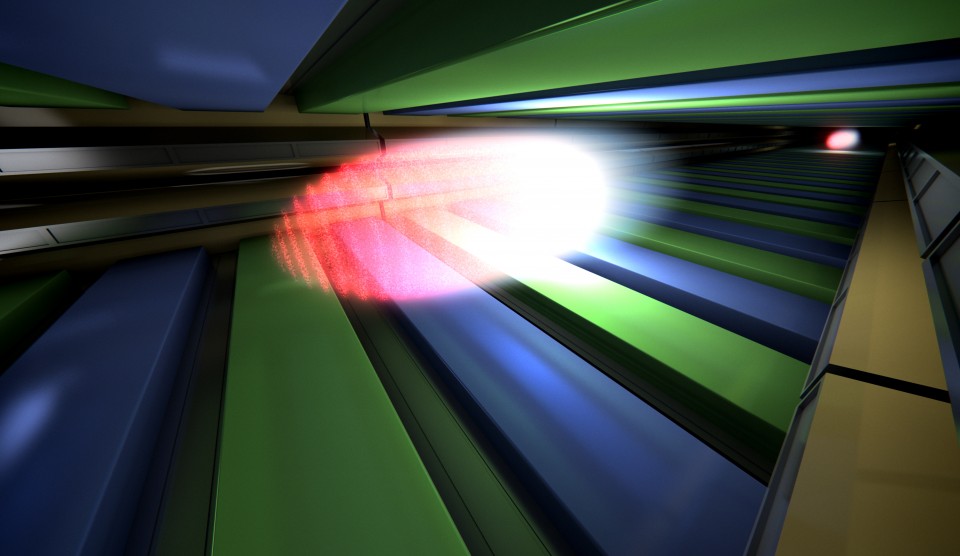
Undulators play a pivotal role in free-electron-lasers such as the European XFEL. An undulator is an arrangement of small magnets creating an alternating magnetic field along the path of the electrons. Traversing this field causes the electrons to wiggle and emit radiation.
For the illustration the XFEL press office wanted a look inside such an undulator, showing the electrons as they emit x-rays. They were referring to an old animation about the radiation process and basically wanted to combine two scenes into one still image.
The first challenge was to find a compromise between the two scenes’ completely different camera perspectives: For the illustration the 3D camera had to look down the array of magnets while at the same time getting a good top or side view of the electrons. This could be achieved with a very wide field of view and the first test for the perspective was already working very well. With that out of the way it was time to take care of the electrons and the radiation.
It’s an age-old problem: How to visualize electrons or x-rays? They are not exactly known for their distinct shape or colour. With the radiation it has been the general consensus at XFEL to make it look like very bright light because a.) x-rays are a form of (invisible) light and b.) the XFEL’s x-rays are particularly ‘bright’, ie. intense.
Electrons on the other hand are generally depicted as perfect spheres. But here it is a whole bunch (read: millions) of them racing through the undulator, so the visualization took the form of a fuzzy, dotted, red cloud. Notice that from the second design onwards test the reflection of the electrons is gone. This was a very important detail to the scientists who argued that with the electrons travelling at almost the speed of light one would never see their reflection (even if they really were perfect spheres).
The electron bunch consists of slices called micro-bunches. They are created by the radiation interacting with the electrons, slowing them down or speeding them up. This is part of a process called self-amplified stimulated emission (SASE) where all electrons end up emitting x-rays in sync with each other. While in reality there would be about a hundred micro-bunches, the illustration only shows 25 divisions to make them visible at all.
The relative dimensions of the electron bunch in the final illustration are accurate. It is shown at a different scale than the undulator, though. While the magnets are in the order of centimetres, the electron bunch extends only over a about 50 microns in length.
 With a title story on the European XFEL, the undulator illustration graced the cover of the 02/2010 issue of Physik in unserer Zeit, a German physics magazine published by Wiley.
With a title story on the European XFEL, the undulator illustration graced the cover of the 02/2010 issue of Physik in unserer Zeit, a German physics magazine published by Wiley.